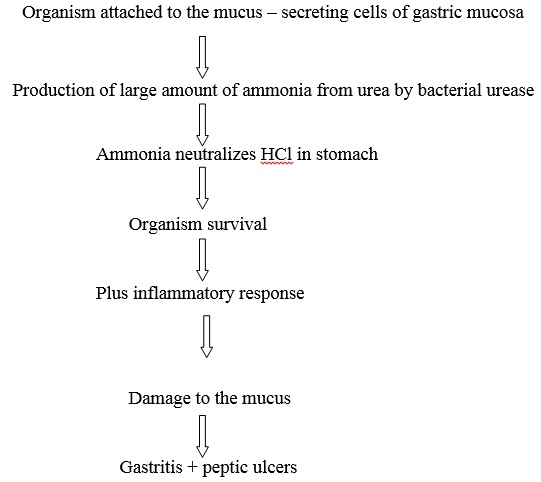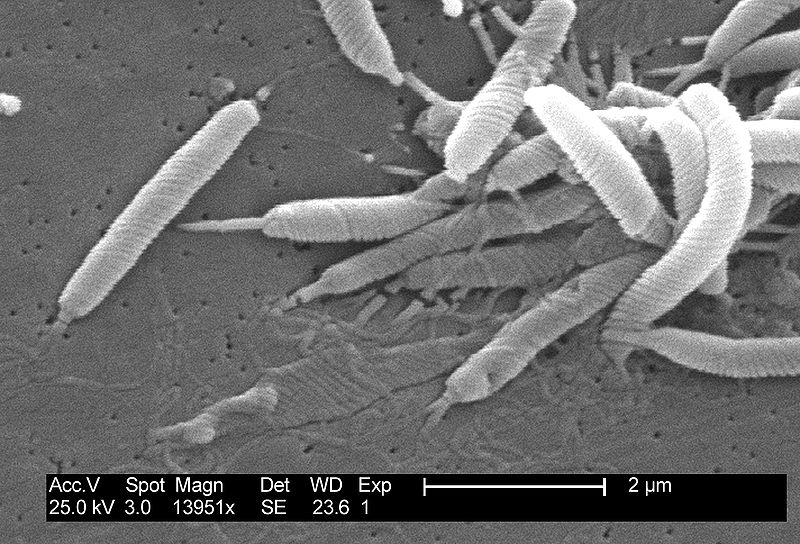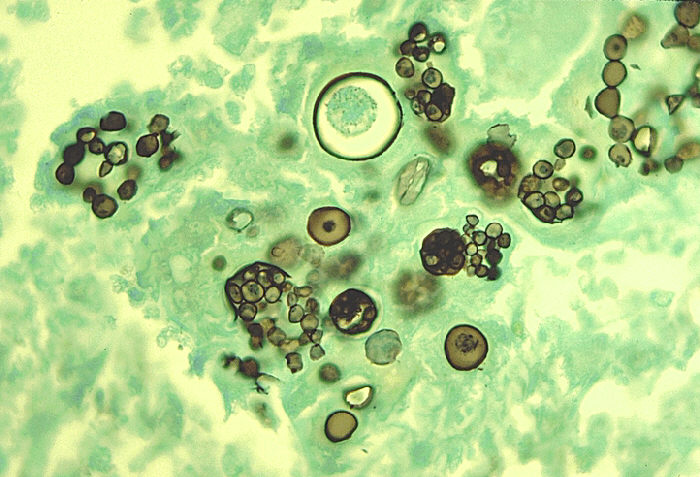Helicobacter pylori is a gram- negative rod, curved in shape and motile with the help of flagellum.
Pathogenesis
Route of Entry
- Person to person transmission
- Ingested
- Not isolated from food, water, stool or animals
The organism usually colonies the stomach.
 Chronic information
Chronic information
B-cell proliferation may lead to B-cell lymphoma.
Virulence factors
- Urease
- Enterotoxins
- Flagellum
Predisposing factors
- Cancers
- Chronic NSAID’s users
- Bad hygiene
- Malnutrition
- Use of proton pump inhibitors
Clinical Symptoms
- Gastritis
- Peptic ulcers
- Recurrent upper abdominal pain
- No bacteremia or disseminated disease
- MALT ( mucosal associated lymphyd tissues )
Lab-Diagnosis
Specimen
• Stool -antigens are detected
• Gastric biopsy
Microscopy
Following features are observed under microscope:
• Gram- negative rods
• Curved in shape
• Flagellum present
• Motile
Culture
- Microaerophilic organisms
- Gram – stain is used for gastric biopsy
- Gastric mucosa is cultured on improved perston blood-free medium. They are urease positive and show grey colonies.
- Blood agar -slightly beta hemolytic colonies are formed.
Biochemical Tests
Serologic Test
- Latex agglutination test
- PCR
Treatment
Two antibiotics plus an agent to lower acidity.
- Amoxicillin
- Metronidazole
- Bismuth salts (Pepto – Bismol)
 howMed Know Yourself
howMed Know Yourself





